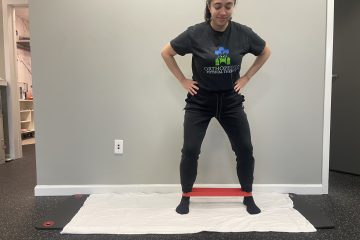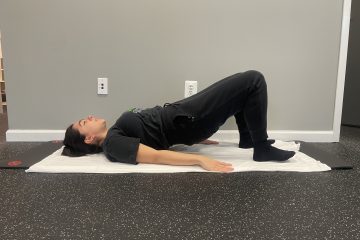Scar tissue can be an ongoing hindrance for many of us. From an obstacle when it comes to movement, to a constant stretching feeling, dealing with scar tissue is oftentimes a daily, frustrating struggle. Luckily, you don’t have to fight that battle alone, and the happy truth is that you can overcome your nemesis. In this post, we’re the exposing truth behind scar tissue, and revealing how you can say goodbye to the nagging, pulling, stiff sensations left in the wake of physical injury. […]
Firstly, then, we need to understand what scar tissue really is. Technically, it’s unorganized collagen that eventually becomes healthy scar tissue. What that means is, scar tissue is really the disorganized product of your body trying to heal itself after an injury. In other words, there’s absolutely nothing abnormal about scar tissue – it’s a perfectly normal physical reaction, albeit uncomfortable and oftentimes painful, alongside.
That having been said, scar tissue can have various causes. It’s not quite as straight-forward as you may have thought. We know the most common ones: surgery, scrapes, and cuts. But what about the lesser known causes? Scar tissue is not only the byproduct of the surgeon’s knife, such as after knee replacements or C-sections. It can also be the result of sprains, muscle tears, and various other muscular injuries endured during daily life. It may be that nagging pain in your elbow since you swung a bit too hard on the 18th hole, or it may be the tightness you feel in your calf after you tried to break a personal hiking record. Either way, you may not even realize you have scar tissue, as it isn’t physically apparent. As you can tell, then, scar tissue isn’t necessarily an external manifestation of physical injury: it can be hidden inside the body, connected to the muscles, and as an accompaniment to what may be considered fleeting injury.
Yet despite its cause, you feel its effects. And so, the big question is, what can be done? If you’re currently struggling with a stubborn ankle injury, or stiff, tender tissue in/around an area you had surgery on, then you know how aggravating and frustrating your daily battle against the irritation and pain can be. Quite possibly, you’ve tried every available cure out there: from tissue oil, to hot and cold packs, and even painkillers! And quite possibly, also, you’ve found very little relief and your health seems to be in jeopardy as a result. We understand how debilitating it can be, and we know that it may seem as though the hindrance will never stop. Happily, though, that isn’t true! In fact, there is a sure-fire way of alleviating the irritation related to scar tissue… and the answer is: physical therapy.
Physical therapy is the most effective way to treat the discomfort and pain associated with scar tissue. Why? Because it’s hands-on, targeted, and holistic. If you’ve never considered physical therapy as a way to treat your scar tissue problem, now is a great time to re-think the possibility. Here are a just a few of the ways physical therapy, administered by a professional, hands-on physical therapist, can help you overcome your struggle with scar tissue:
Massaging
Hands-on, targeted, massage is an amazing way of alleviating the pain and discomfort associated with scar tissue. Far from being a general massage, the techniques practiced by a skilled, professional, hands-on physical therapist are able to address the very essence of the problem, thereby releasing the tension and stiffness within the scar and muscles surrounding it. Physical therapy massage techniques offer a permanent solution to your nagging scar tissue troubles.
Myofascial Release
A little known aspect of scar tissue is its close relation to the fascia tissues, that is, a band of collagen tissues just below the skin. When this band is disrupted and altered, such as after surgery or other injuries, the tissues struggle to realign properly, thereby causing tightness and stiffness. With myofascial release, these tissues are manipulated, stretched, and made more elastic, thereby giving you more movement in that area. When done by a professional, hands-on physical therapist, this is a crucial step in overcoming the pain and stiffness associated with scar tissue. It’s an absolutely pivotal step on your road to health.
Microcurrent Point Stimulation
In addition to the techniques mentioned above, a professional physical therapist may also administer microcurrent point stimulation, a technical name for acupuncture combined with low electrical pulses. These pulses actually have the ability to release tension, relax muscles, and calm the nervous system, all of which aid greatly in the alleviation of stiffness and immobility in scar tissue. And not only that, but microcurrent point stimulation releases endorphins, too! Alongside the other treatments you’ll receive from your physical therapist, this therapeutic technique is a fantastic accompaniment.
Stretches
While physical therapy provides life-changing hands-on techniques, you will also receive, and be guided through, stretches tailor-made for your specific issue. These stretches can be done at home, thereby ensuring that your journey to health is given a jump start and is, ultimately, maintained. Remember, a physical therapist releases the muscular tension as well as the irregular pulling of the collagen tissues. As such, it’s imperative that the scarred area is stretched and given attention, as this maintains its malleability – that is the true key to overcoming the discomfort associated with scar tissue.
Remember, scar tissue doesn’t have to be permanent. And you certainly do not have to struggle against the discomfort associated with it for even a day longer. A physical therapist can help you get back to the active, mobile, pain-free life you long for and deserve. We understand that the struggle you face is more than just a scar – it’s a daily battle against discomfort and pain. And that is why we sincerely want to help. Call us today to speak to one of our dedicated, professional physical therapists – find out how you can overcome the pain and stiffness related to scar tissue, right now. We’re very excited to hear from you!


